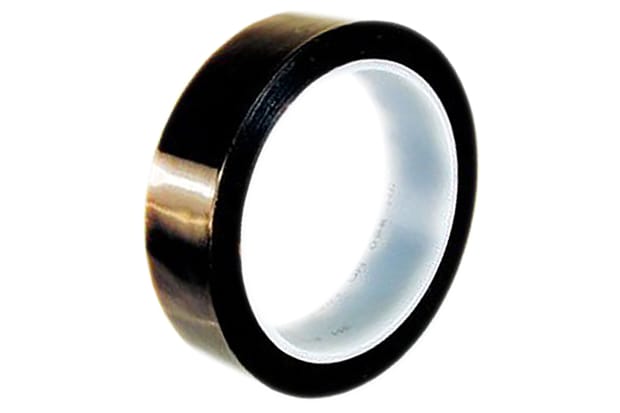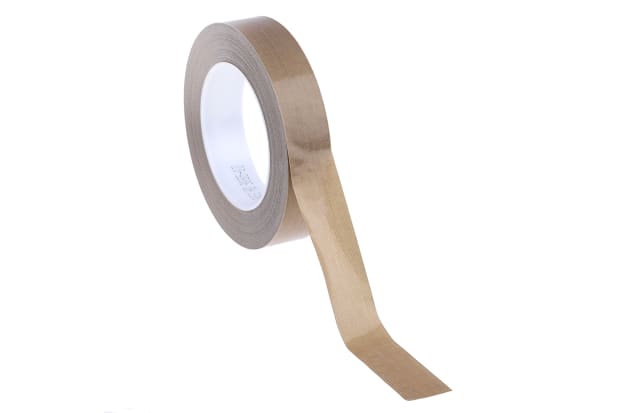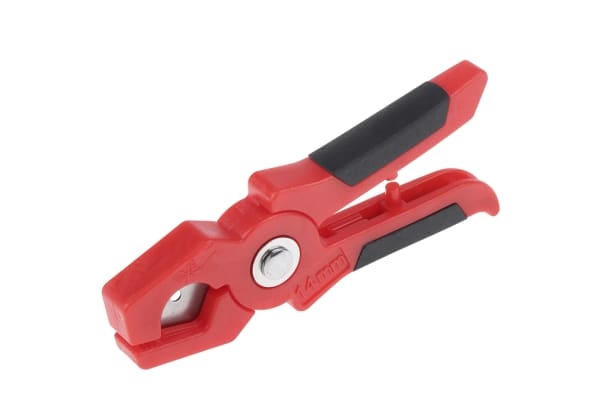- Published 24 Jan 2023
- Last Modified 29 Aug 2023
- 11 min
A Complete Guide to PTFE Tape
Our guide looks at what PTFE tape is, explains how to use it properly, and explores the different applications.

Reviewed by Luqman Said Abdullah, Technical Support Engineer (January 2021)
What is PTFE Tape?
PTFE tape is a simplistic yet highly versatile lubricating material and thread sealant. It is mainly used in ductwork and piping applications and is also known as thread seal tape and plumber's tape.
Much like all types of professional adhesive tapes, it is usually sold pre-cut to a range of specified widths on small rolls or spools. Plumber’s seal tapes sometimes come in a plastic cover or casing, to protect and preserve the adhesive material during toolbox storage.
Essentially, plumber’s tape is a long synthetic polymer film strip which is sold on a spool. The key characteristics of PTFE include the fact that it is both hydrophobic and extremely low friction. This makes PTFE tape highly useful for many different pipework and plumbing applications.

What is PTFE?
PTFE stands for polytetrafluoroethylene. It is a synthetic fluoropolymer widely used across a range of industries and applications.
PTFE Tape Uses
Understanding what PTFE tape is used for is important. There are several potential Teflon™ tape uses but ultimately, the requirements of a particular task will determine whether PTFE tape is suitable.
PTFE tape is commonly referred to as a thread sealant and many types can help to minimise leakage around certain types of joints. Specific thicknesses of tape can be selected to provide an additional barrier to leakage in ducting. These tapes often feature inherently expansive properties, helping to fill out any small gaps between threads and conduits once they have been wrapped around the inside of a threaded joint.
Common PTFE tape uses include:
PTFE Tape for Leaks
The use of plumber’s tape to stop leaks has long been a widespread practice. It is primarily used as a preventative measure when coupling joints together; wrapping the threads of a male component with PTFE tape before mating can help to seal and tighten the joint from the inside. This provides added protection against the risk of future leakage.
PTFE tape can also be used as a temporary short-term solution to help seal plumbing leaks until further work can be carried out. It is generally applied to a joint's exterior to minimise further leakage. However, it is not designed to be a long-term measure for fixing degraded, damaged, or incorrectly fitted joints.
PTFE Tape for Gas
Using PTFE tape for gas pipe sealer applications is common, but it is vital to select the right product for the job. Gas-rated PTFE thread seal tape is widely available, but it tends to be thicker and denser than standard PTFE tape for use in liquid plumbing environments. The latter can be prone to degradation and leaking if used inappropriately for gas pipelines, as it tends to be more porous. This is usually because of having been stretched thinner during the manufacturing process than the more heavy-duty PTFE tapes for natural gas ducting joints.
PTFE Tape for Petrol and Oil
Due to its chemical inertness, PTFE tape is resistant to both petrol and oil. Therefore, it is often used in automotive applications to seal and lubricate fuel line joints.
Plumber’s lubricating and sealing tape is designed to cope well under moderately high pressure and heat demands. This means that it is broadly suitable for use in environments where it may encounter oil, petrol, diesel and other fuels.
As with most PTFE tape applications, it is good practice to start wrapping slightly below the first line of threading, leaving one full thread circumference exposed at the insertion end of the mating joint. If any small pieces of tape are sheared off where the threads bite together, you can start your wrap a little further back from the endpoint to prevent these material scraps from entering and potentially contaminating connected tanks or fuel lines.
How to Use PTFE Tape
Applying plumber’s tape to joint threads is a simple process. However, making sure to follow best practices for using PTFE tape should yield reliable results every time.
How to Apply PTFE Tape
When applying PTFE tape, the first and most crucial job is always to make sure that you are using the correct sort of tape for the application. Once that has been confirmed, you should then take care to follow these relatively straightforward steps in order:
- First, clean the threads of the duct joint where you will be applying the PTFE tape. Existing pipes will likely have traces of dirt, rust, grease or other pipe sealant left on them from previous applications. In the case of brand new lengths of conduit, the threads may not have been cleaned thoroughly after machining, meaning there could be metal shavings or factory oils present that will negatively impact on the integrity of the seal formed. You may need a specialised product such as an industrial-strength pipe cleaner to fully remove some stubborn or harsh solvents and greases
- Allow the cleaned joint threads to thoroughly dry out before attempting any further work on them. This can usually be achieved with the conscientious use of paper towels, but it is wise to leave them out to fully air-dry if possible. Either way, you must be sure that no beads of moisture remain in even the tightest channels between or around threads that will be mated together
- Once the fittings are completely dry, you can start to wrap around the threads with the PTFE sealant tape. Begin one thread down from the open end as this will prevent any sheared off material scraps from entering the duct. Wrap in the same descending direction as the threads, working your way back towards the pipe. This is key to preventing unhelpful distortions, such as concentrated bunching or unravelling of the tape, as the opposing ends of the joint come together
- As you work your way down the threads, you should overlap the layers of tape by about half their width to ensure full coverage all the way around. Although some material deformation between threads can help to create a tighter seal, take care to avoid using too much as excess distortion can prove problematic. As you wrap, pull tightly enough to maintain sufficient tension so the threads remain visible as defined ridges, even through thicker or more opaque tape varieties
- Continue in this manner until you reach about one full wrap past the end of the final thread. Complete the last wrap by cutting and sticking the final length of loose tape, ensuring that none is left improperly adhered, and the cut off end is smoothly and seamlessly pressed down against the remainder of the wrapping
Using PTFE Tape: A Visual Guide
This video demonstrates how to use white PTFE tape in just 30 seconds, providing a useful visual guide to help you get started.
Once you have watched our video, click the button below to shop our full range of PTFE tape and select the product which best suits your requirements.
PTFE Tape vs Teflon Tape
Is PTFE Teflon™? You may see PTFE plumber’s tape called Teflon™ tape in some situations, but this is not technically accurate. Teflon™ is a specific brand of material that - while functionally and chemically identical to PTFE material - is not presently manufactured in tape form by the current trademark holder.
As a result, Teflon™ thread sealing tape is technically not an option. By contrast, true PTFE tape is widely available.
You may also encounter silicone tape for plumbing applications, but it is always important to check the specifications and requirements for your task before purchasing.
PTFE Tape Colours

PTFE tape is available in a range of different colours, sometimes used to signify particular characteristics. However, the meaning behind each colour varies depending on geography, so it is important to check you are using the correct colour code for your location.
As well as different sizes and conforming to specific standards, PTFE tape must be of a suitable grade for the industry or application where it will be used. It should also be noted that some manufacturers and industries classify tape by the colour of the reel rather than the tape itself.
Generally, white sealing tape (one of the most common varieties) is used for standard plumbing applications whereas yellow Teflon™ tape is used with gas.
PTFE Properties
One key characteristic of PTFE thread seal tape is that it is water-repellent, which makes it ideal for use in a wide variety of plumbing and ductwork applications.
It is often used to lubricate piping joint threads as it is very low friction material. Adding a layer of PTFE tape around joint threads can help to provide a tighter seal and increase the ease of both screwing mating parts together and uncoupling them in the future.
Specific types of plumber’s tape may also boast any number of other important qualities which make it even better suited to particular tasks or environments. Although specifics vary between purposes and brands, some types of PTFE tape might include the following features:
- Chemically inert - as it will not react with other elements, it can be used in more challenging environments where gases, solvents or acids may be present
- High arc resistance and temperature performance - enabling use with high-temperature capacitors, coils, and wire harnesses
- Robust pressure resistance - this makes it suitable for use in high bar applications such as fuel injection systems
- Non-stick backing - providing simple removal and reapplication, negating the need to clean adhesive from inside surfaces of duct joints and pipe threads
- Malleable and non-hardening - this makes PTFE tape ideal for winding easily around pipe threads, compression joints, radiator valves, taps and other fittings
PTFE Tape Temperature

Different formulations and brands of plumber’s tape will typically have different temperature ratings, but the majority cover a fairly wide range of operating conditions.
The minimum safe operating temperature for PTFE tapes is around -200 Celsius, while the upper limits of heat performance tend to be at around +260 Celsius. PTFE itself has a high melting/decomposition point (of around +327 Celsius), but it begins to deteriorate as temperatures rise through the +200 to +260 Celsius range.
Not all thread seal tapes will be able to withstand this full array of safe operating temperatures - plumber’s tapes intended for use in high-temperature applications accordingly. Always check the specified heat rating in the product information provided by the supplier and manufacturer.
How Does PTFE Tape Work?
PTFE tape creates a tight-fitting skin or seal around the threads of various joint types in ductwork and piping.
In addition to working as a deformable filler and helping to prevent leaks - where the tape is dense and thick enough - it also lubricates the joint threads. PTFE's very low surface friction causes this lubrication effect. In fact, PTFE has one of the lowest friction coefficients of any known solid!
The correct PTFE tape application can allow pipe joint threads to be more tightly mated and should also prevent them from seizing up if they need to be unscrewed in the future.
FAQs
Can You Use PTFE Tape on Compression Fittings?
While it can be used, PTFE on compression fittings is not typically required. Thread sealants are not needed with compression fittings because, in this application, the thread itself does not seal the joint. Instead, it is the compression of the ferrule between the pipe and the nut that makes the seal, rendering the use of PTFE tape unnecessary.
How Many Turns of PTFE Tape?
The number of turns needed will largely depend on the thickness of the tape you are using. However, as a rule, two or three revolutions will be sufficient for most standard applications.
When to Use PTFE Tape?
PTFE tape is a staple component of the plumber's toolkit. Keeping supplies of tape to hand will prove useful should any leaks in plumbing systems occur. PTFE is typically used as either a preventative measure to help secure joints and protect against future leaks or as a short-term solution in the event of more serious damage or leaks.
What PTFE Tape Alternatives are Available?
Pipe joint compounds (also known as pipe dope or pipe glue) can be used instead of PTFE tape. However, it should be noted that these alternatives typically have higher strength than tape so are ideally suited as permanent seals rather than temporary solutions.

